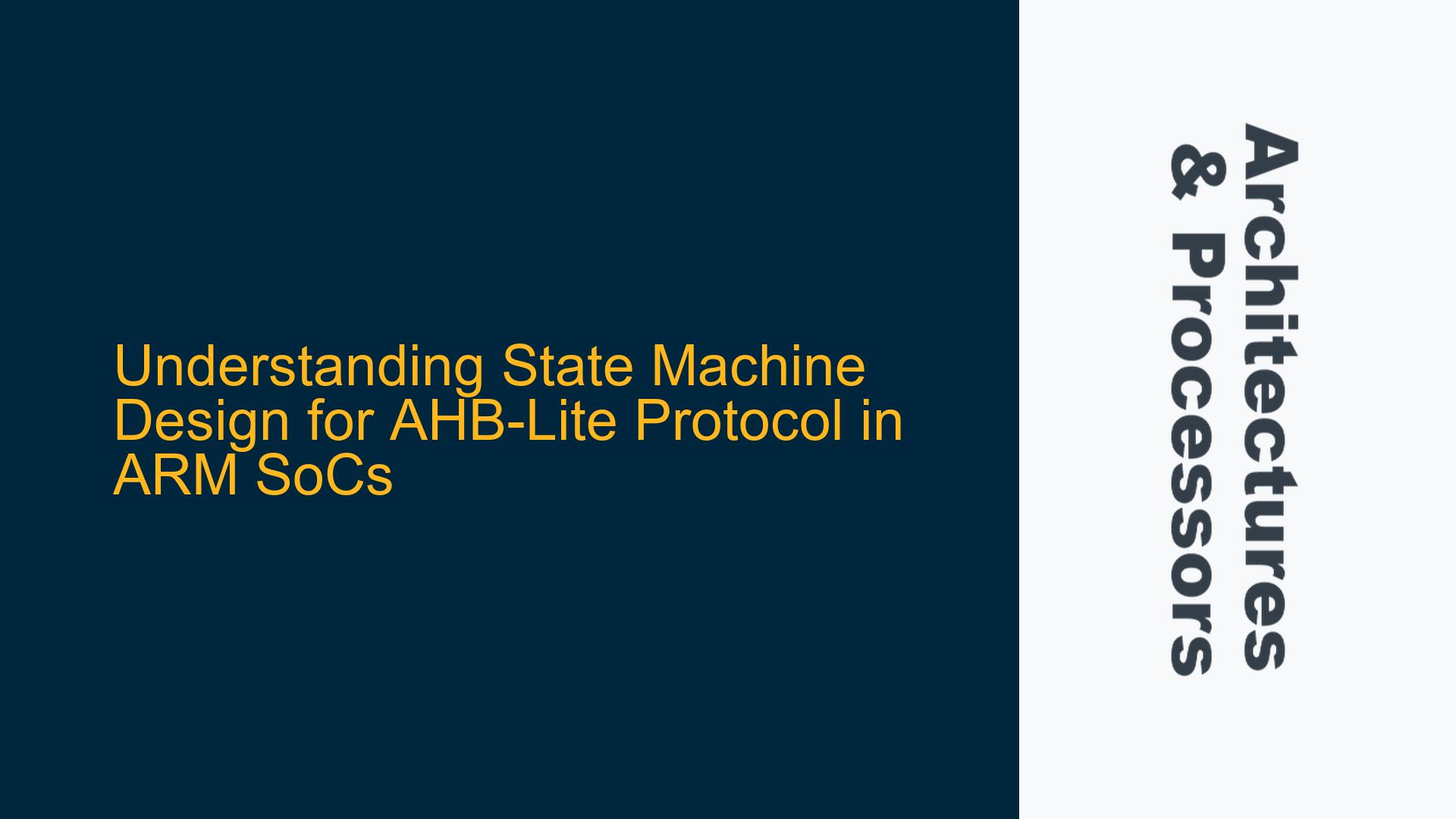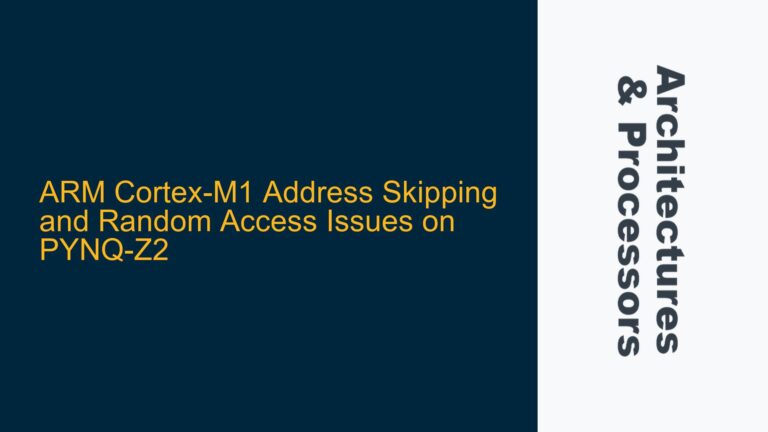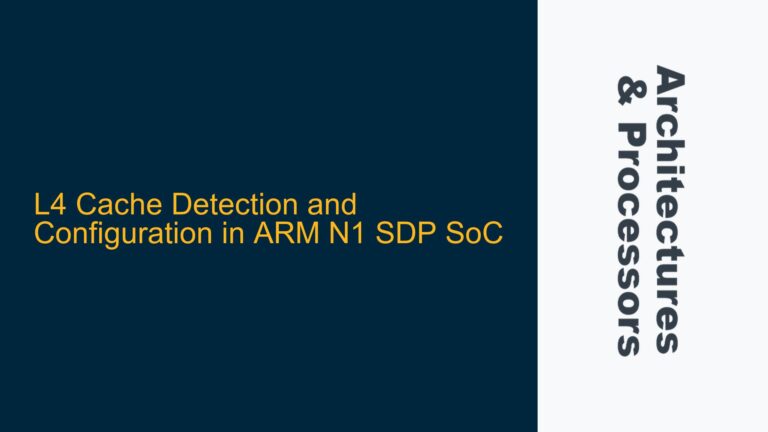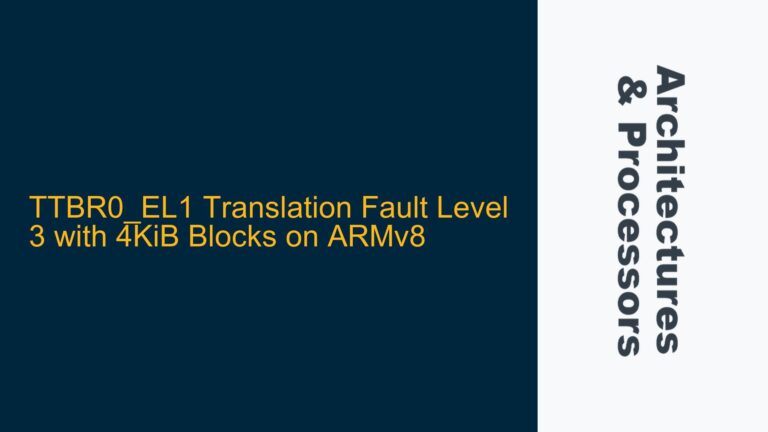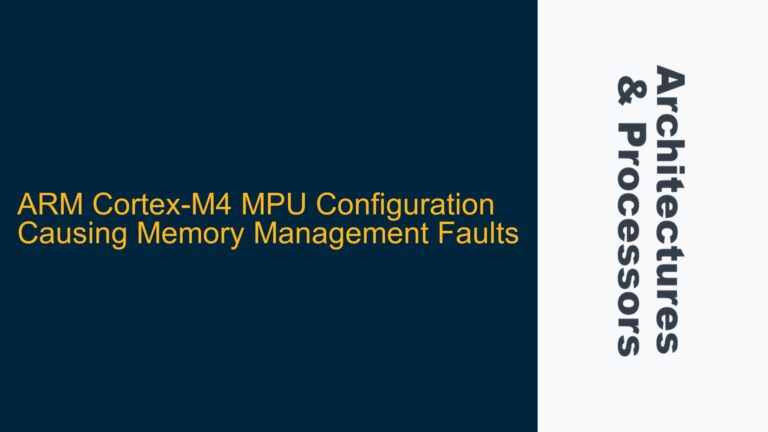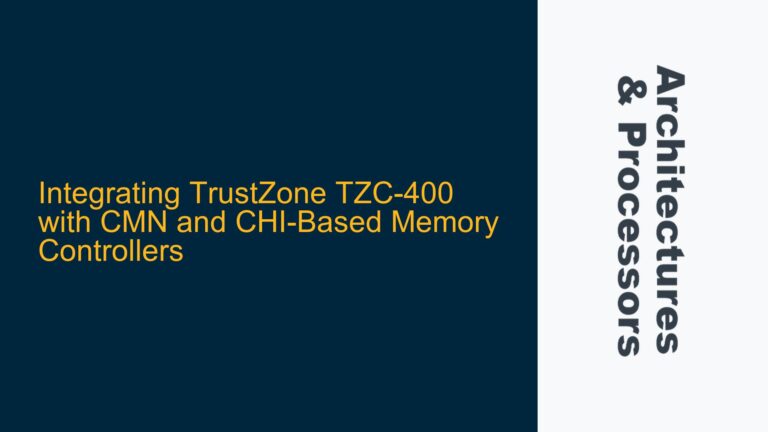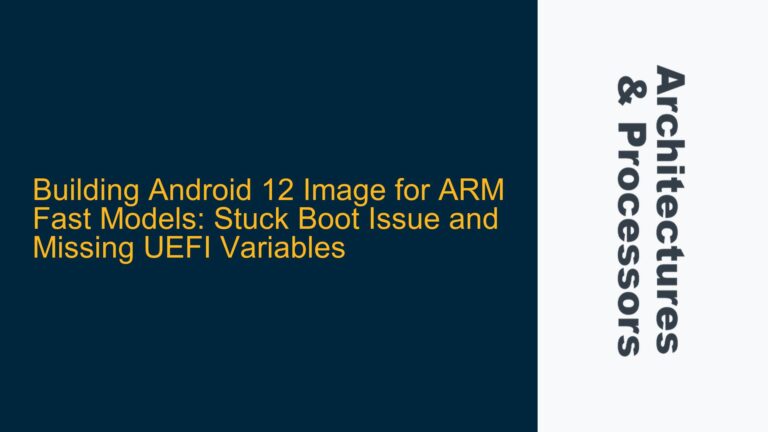AHB-Lite Protocol State Machine Implementation Challenges
The AHB-Lite protocol, a simplified version of the Advanced High-performance Bus (AHB) protocol, is widely used in ARM-based System-on-Chip (SoC) designs for its efficiency in handling data transfers between masters and slaves. One of the critical aspects of implementing the AHB-Lite protocol is the design of state machines that manage the address and data phases of transactions. The protocol’s pipelined nature allows the address phase of one transfer to overlap with the data phase of the previous transfer, which introduces complexity in state machine design. This overlapping necessitates careful consideration of how state machines are structured to handle concurrent address and data phases without causing conflicts or protocol violations.
In a typical AHB-Lite system, the state machine must manage transitions between states such as IDLE, ADDRESS, and DATA, while also accounting for the protocol’s control signals like HTRANS (transfer type), HREADY (transfer readiness), and HBURST (burst type). The state machine’s primary role is to ensure that the master interface correctly initiates and completes transactions in compliance with the AHB-Lite protocol specifications. However, the pipelined nature of the protocol means that at any given time, there could be two active transfers: one in the address phase and another in the data phase. This raises questions about whether a single state machine can handle both phases or if multiple state machines are required.
The challenge lies in designing a state machine that can efficiently manage these overlapping phases while maintaining protocol compliance. A poorly designed state machine can lead to issues such as incorrect data sampling, protocol violations, or even deadlock scenarios. Therefore, understanding the intricacies of state machine design for AHB-Lite is crucial for ensuring robust and efficient SoC implementations.
Overlapping Address and Data Phases in AHB-Lite Transactions
The overlapping of address and data phases in AHB-Lite transactions is a fundamental characteristic of the protocol that directly impacts state machine design. In AHB-Lite, the address phase of a transaction begins when the master asserts the address and control signals (e.g., HADDR, HTRANS, HWRITE) on the bus. The data phase, on the other hand, occurs when the slave responds with the appropriate data (HRDATA for reads or HWDATA for writes) and asserts HREADY to indicate that the data phase is complete. Due to the pipelined nature of the protocol, the address phase of the next transaction can start while the data phase of the current transaction is still ongoing.
This overlapping is possible because the AHB-Lite protocol uses a split transaction model, where the address and data phases are decoupled. The decoupling allows for higher bus utilization and improved performance, as the master can initiate new transactions without waiting for the previous transaction’s data phase to complete. However, this also means that the state machine must be designed to handle two concurrent states: one for the address phase of the new transaction and another for the data phase of the previous transaction.
The complexity increases when considering different types of transfers, such as single transfers (NONSEQ) and burst transfers (SEQ). In burst transfers, the address phase of subsequent transactions is dependent on the previous transaction’s address, requiring the state machine to track the sequence of addresses and ensure that the correct data is sampled at the right time. Additionally, the state machine must account for scenarios where the slave may insert wait states by deasserting HREADY, which can further complicate the timing of state transitions.
Designing a Unified State Machine for Address and Data Phases
To address the challenges posed by overlapping address and data phases, a unified state machine approach can be employed. This approach involves designing a single state machine that tracks both the address and data phases of transactions, rather than using separate state machines for each phase. The unified state machine leverages the protocol’s control signals, such as HTRANS and HREADY, to manage state transitions and ensure that the correct data is sampled at the appropriate time.
The state machine can be designed with states such as IDLE, ADDRESS, and DATA, where the ADDRESS state handles the address phase of the current transaction, and the DATA state handles the data phase of the previous transaction. The transition from the ADDRESS state to the DATA state is triggered by the assertion of HREADY, indicating that the data phase is complete. Meanwhile, the address phase of the next transaction can begin while the state machine is in the DATA state, allowing for the overlapping of phases.
In this design, the state machine must also account for different types of transfers, such as single transfers and burst transfers. For burst transfers, the state machine must track the sequence of addresses and ensure that the correct data is sampled for each transfer in the burst. This can be achieved by incorporating additional states or logic to handle the sequence of addresses and data phases.
To further optimize the state machine design, the use of registered signals can be employed to delay the address phase state by one clock cycle, effectively creating a pipeline stage that aligns with the data phase. This approach eliminates the need for a separate data phase state machine, as the data phase can be derived from the registered address phase state. By leveraging the protocol’s control signals and incorporating registered signals, the unified state machine can efficiently manage the overlapping address and data phases while maintaining protocol compliance.
In conclusion, the design of state machines for the AHB-Lite protocol requires a deep understanding of the protocol’s pipelined nature and the overlapping of address and data phases. By employing a unified state machine approach and leveraging the protocol’s control signals, designers can create robust and efficient state machines that handle the complexities of AHB-Lite transactions. This approach not only ensures protocol compliance but also optimizes bus utilization and performance in ARM-based SoC designs.
